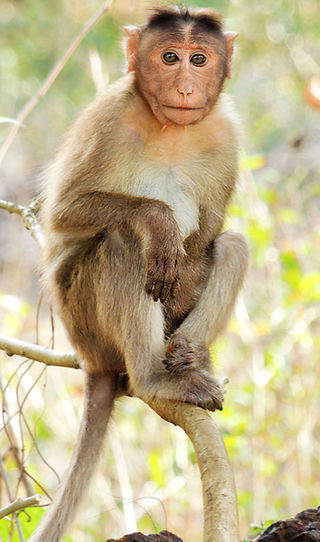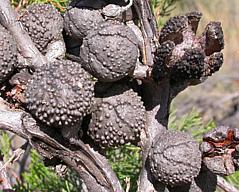
The International Union for Conservation of Nature (IUCN) Red List of Threatened Species, also known as the IUCN Red List or Red Data Book, founded in 1964, is an inventory of the global conservation status and extinction risk of biological species. A series of Regional Red Lists, which assess the risk of extinction to species within a political management unit, are also produced by countries and organizations.

Primula is a genus of herbaceous flowering plants in the family Primulaceae. They include the primrose, a familiar wildflower of banks and verges. Other common species are P. auricula (auricula), P. veris (cowslip), and P. elatior (oxlip). These species and many others are valued for their ornamental flowers. They have been extensively cultivated and hybridised. Primula are native to the temperate Northern Hemisphere, south into tropical mountains in Ethiopia, Indonesia, and New Guinea, and in temperate southern South America. Almost half of the known species are from the Himalayas.

The macaques constitute a genus (Macaca) of gregarious Old World monkeys of the subfamily Cercopithecinae. The 23 species of macaques inhabit ranges throughout Asia, North Africa, and Europe. Macaques are principally frugivorous, although their diet also includes seeds, leaves, flowers, and tree bark. Some species such as the long-tailed macaque will supplement their diets with small amounts of meat from shellfish, insects, and small mammals. On average, a southern pig-tailed macaque in Malaysia eats about 70 large rats each year. All macaque social groups are arranged around dominant matriarchs.

Lauraceae, or the laurels, is a plant family that includes the true laurel and its closest relatives. This family comprises about 2850 known species in about 45 genera worldwide. They are dicotyledons, and occur mainly in warm temperate and tropical regions, especially Southeast Asia and South America. Many are aromatic evergreen trees or shrubs, but some, such as Sassafras, are deciduous, or include both deciduous and evergreen trees and shrubs, especially in tropical and temperate climates. The genus Cassytha is unique in the Lauraceae in that its members are parasitic vines. Most laurels are highly poisonous.

A conservation-dependent species is a species which has been categorized as "Conservation Dependent" ("LR/cd") by the International Union for Conservation of Nature (IUCN), as dependent on conservation efforts to prevent it from becoming endangered. A species that is reliant on the conservation attempts of humans is considered conservation dependent. Such species must be the focus of a continuing species-specific and/or habitat-specific conservation program, the cessation of which would result in the species qualifying for one of the threatened categories within a period of five years. The determination of status is constantly monitored and can change.

An IUCN Red List Critically Endangered species is one that has been categorized by the International Union for Conservation of Nature as facing an extremely high risk of extinction in the wild. As of 2021, of the 120,372 species currently tracked by the IUCN, there are 8,404 species that are considered to be Critically Endangered.

Callitris verrucosa, also known as the mallee pine, is a species of conifer in the family Cupressaceae. It is found only in Australia. The plant has a green/grey colour, rigid branches and can reach a height of 8 metres (26 ft). It has a slow grow rate.
Damburneya bicolor is a species of plant in the family Lauraceae. It is endemic to Panama. It is threatened by habitat loss.
Damburneya leucocome is a species of plant in the family Lauraceae. It is endemic to Chiapas state in southwestern Mexico.
Damburneya longipetiolata is a species of plant in the family Lauraceae. It is endemic to Costa Rica.
Damburneya matudae is a species of plant in the family Lauraceae.
Damburneya mirafloris is a species of plant in the family Lauraceae. It is endemic to Nicaragua.
Damburneya rudis is a species of plant in the family Lauraceae. It is found in El Salvador, Guatemala, and the Mexican state of Chiapas.
Damburneya salicina is a species of plant in the family Lauraceae. It is found in Costa Rica and Panama.
Damburneya smithii is a species of plant in the family Lauraceae. It is found in Costa Rica and Panama.
Damburneya roberto-andinoi is a species of plant in the family Lauraceae. It is endemic to Honduras. It is a tree growing up to 15 meters tall.

An endangered species is a species that is very likely to become extinct in the near future, either worldwide or in a particular political jurisdiction. Endangered species may be at risk due to factors such as habitat loss, poaching, and invasive species. The International Union for Conservation of Nature (IUCN) Red List lists the global conservation status of many species, and various other agencies assess the status of species within particular areas. Many nations have laws that protect conservation-reliant species which, for example, forbid hunting, restrict land development, or create protected areas. Some endangered species are the target of extensive conservation efforts such as captive breeding and habitat restoration.
Damburneya guatemalensis is a plant species in the family Lauraceae. It is endemic to Guatemala where it has only been found in the departments of Petén, Alta Verapaz and Izabal. It is a tree or shrub of up to 8 m that grows in tall broadleaf forest in association with Orbignya species.

Damburneya is a genus of evergreen trees and shrubs in the laurel family (Lauraceae). It is native to tropical regions of North America and South America, with the center of diversity in Central America.







